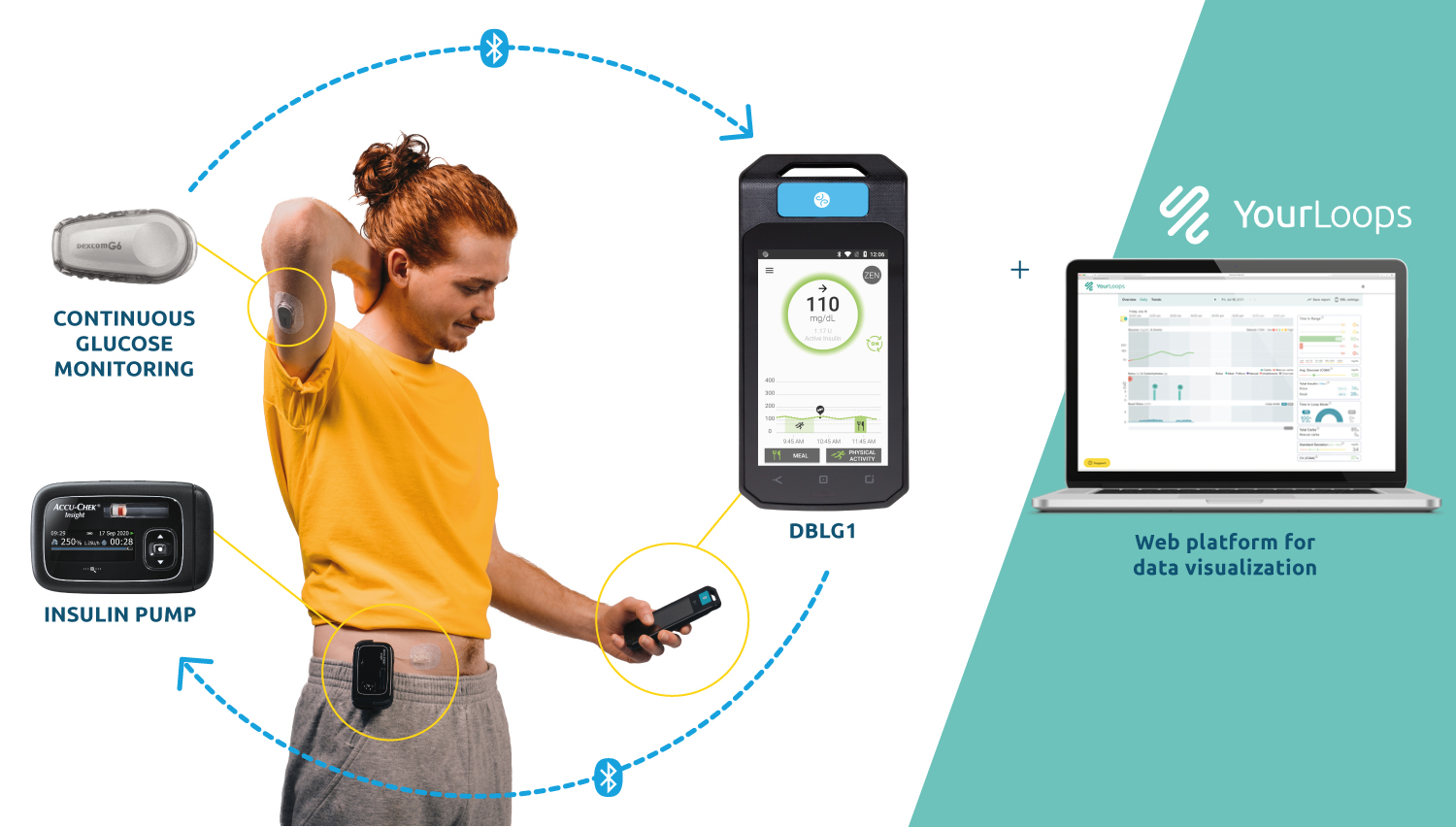
PARIS, 28-Sep-2021 — /EPR HEALTHCARE NEWS/ —
Real-life data confirm clinical and pre-launch data: TIR significantly improved
Today, Diabeloop presents data¹ from a 1,000 patients equipped with DBLG1 System with Accu-Chek Insight insulin pump in Germany. One of the main insights unveiled is an overall Time in optimal glucose Range (70-180 mg/dL) of 73.4% for the whole cohort of patients.
When looking specifically at data² from patients whose HbA1c was available at initiation, it can be observed that Time In Range improved 17.1 percentage points. This result is consistent with results which have been previously published pre-launch³ showing an increase in Time In Range of 16.7 percentage points.
Hypoglycemia reduction a huge factor for an improved quality of life
Data also showed a significant reduction of time spent in hypoglycemia with Time below 70 mg/dL at 1% while time below 54 mg/dL was 0.2%. This outcome surpasses the targets of the 2019 International Consensus.
Feedback of people with diabetes and their caregivers have shown that reducing hypoglycemia is very important. In addition to the life-threatening risks associated with hypoglycemia, discomfort and a decreased quality of life weighs heavily on people experiencing it regularly.
Pre-launch patients
“It (diabetes) had a big impact on my professional life (…) because of my hypoglycemia.â€
“I have almost eliminated lows (…), especially at night, which is important!â€
Pr. Pierre-Yves Benhamou commented: “The 2019 International Consensus on Time in Range aimed at achieving >70% in range 70-180 mg/dL, <4% below 70 mg/dL and <1% below 54 mg/dL in the majority of people with type 1 diabetes. This means over 16 hours in target range and less than 1 hour below range. The outcomes observed in 1,000 patients using DBLG1 are, indeed, very good and encouraging.â€
Patient satisfaction is high
In the 5 countries where DBLG1 System is currently available, feedback from equipped patients has been very positive about its impact on TIR and hypoglycemia, in addition to the system’s ease of use and enhancement of quality of life.
Public social media posts:
“87% TIR, no hyposâ€
“The result (related to sport): quite conservative but great. No hypo.â€
“Very intuitive, little information needed to provide at initiation.â€
“I am absolutely delighted. Sometimes I even forget that I have diabetes.
I let it (DBLG1) do the math and success shows.â€
Erik Huneker, founder and co-CEO of Diabeloop, who will be presenting the data at EASD4 declared: “Looking at the great results and listening to patient feedback on real-life experiences with our system has been a great reward for our work, and encourages us to make the system even better going forward. We will be able to bring DBGL1 quickly to many more patients in Europe while we keep working on bringing more choices, more interoperability, and more solutions to people with diabetesâ€.
About Diabeloop
Created in 2015, Diabeloop is a high-growth company that offers AI-based, personalized solutions to improve clinical outcomes for people with diabetes while relieving them of their constant mental burden. DBLG1 System, Diabeloop’s first medical device for automated insulin delivery (AID) and DBL-hu, its solution for highly unstable Type 1 diabetes management, are both CE-marked and being deployed in Europe.
A second round of financing of 31 million euros, concluded at the end of 2019, supported the international commercial rollout of the DBLG1 iController and Diabeloop’s ambitious R&D program. Today, Diabeloop gathers the personality, passion, and skills of more than 100 talented individuals who work hard to improve the quality of life for every person living with insulin-dependent diabetes.
About DBLG1
DBLG1 is a self-learning algorithm that automates and personalizes the treatment of Type 1 diabetes. The therapeutic artificial intelligence contributes to reducing the heavy mental burden associated with this chronic condition. Hosted on a dedicated handset, it is connected to a continuous glucose monitor (CGM) and an insulin pump. It analyzes the data in real time, and decides whether to maintain current settings, adjust or stop basal insulin delivery to avoid a predicted low/high or deliver a bolus to correct a high.
YourLoops, Diabeloop’s data visualization platform allows patients to access data generated by DBLG1 and share them with his/hers healthcare team.
SOURCE: EuropaWire
